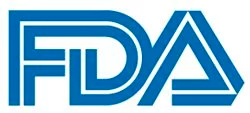Article
FDA Accepts NDA for Momelotinib for Treatment of Myelofibrosis
Author(s):
The FDA has accepted a new drug application for momelotinib for the treatment of patients with myelofibrosis.

The FDA has accepted a new drug application (NDA) for momelotinib for the treatment of patients with myelofibrosis, according to an announcement from GSK.1
The NDA is supported by findings from the phase 3 MOMENTUM trial (NCT04173494), where momelotinib demonstrated significant improvements in symptoms, spleen size, and anemia measures compared with danazol in patients with symptomatic and anemic myelofibrosis who previously received treatment with a JAK inhibitor, meeting the primary and key secondary end points of the study.2
Data showed that patients treated with momelotinib (n = 130) achieved a total symptom score (TSS) response rate at week 24 of 24.6% (95% CI, 17.49%-32.94%) compared with 9.2% (95% CI, 3.46%-19.02%) for patients given danazol (n = 65; P = .0095). Patients needed to achieve at least a 50% reduction in TSS compared with baseline to establish superiority.
In terms of spleen response rate at week 24, a volume reduction of at least 25% occurred in 40.0% (95% CI, 31.51%-48.95%) vs 6.2% (95% CI, 1.70%-15.01%) of patients treated with momelotinib and danazol, respectively, (P < .0001). Additionally, 23.1% (95% CI, 16.14%-31.28%) of those in the momelotinib arm achieved at least a 35% reduction in spleen volume vs 3.1% (95% CI, 0.37%-10.68%) in the danazol arm (P = .0006).
Furthermore, 31% of patients in the momelotinib arm achieved transfusion independence at week 24 vs 20% of those in the danazol arm (P = .0064).
Momelotinib is designed to inhibit the JAK1, JAK 2 and ACVR1 pathways. Inhibition of the JAK1 and JAK2 pathways could improve symptoms and splenomegaly, and inhibition of ACVR1 can lead to a decrease in circulating hepcidin, which can contribute to anemia since it is elevated in patients with myelofibrosis. Momelotinib is not currently approved in any market.
The global, double-blind MOMENTUM trial enrolled symptomatic and anemic patients with myelofibrosis who received prior treatment with an FDA-approved JAK inhibitor. Patients were required to be at least 18 years of age with confirmed primary myelofibrosis per WHO 2016 criteria or post polycythemia vera myelofibrosis per International Working Group-Myeloproliferative Neoplasms Research and Treatment criteria.3
Other key inclusion criteria included a TSS of at least 10, anemia (hemoglobin of less than 10 g/dL), baseline splenomegaly (palpable spleen of at least 5 cm), and high-risk, intermediate-2, or intermediate-1 risk disease.
Patients were not permitted to have undergone prior allogeneic stem cell transplant. They were also excluded if they had prior treatment with momelotinib at any time, an approved JAK inhibitor within 1 week prior to the first day of baseline, an active anti-myelofibrosis therapy within 1 week of baseline, potent cytochrome P450 3A4 inducers within 1 week of randomization, an investigational agent within 4 weeks of randomization, an erythropoiesis agent within 4 weeks of randomization, danazol within 3 months of randomization, splenic irradiation with 3 months of randomization, or current simvastatin, atorvastatin, lovastatin or rosuvastatin.
Patients were randomized 2:1 to receive 200 mg of momelotinib or 600 mg of danazol per day. The primary end point of the trial was TSS response rate at week 24. Secondary end points included transfusion independence and splenic response rate at week 24.
References
- US FDA accepts new drug application for GSK’s momelotinib for the treatment of myelofibrosis. News release. GSK. August 17, 2022. Accessed August 17, 2022. https://bit.ly/3K4Azcq
- Verstovsek S, Vannucchi A, Gerds AT, et al. MOMENTUM: phase 3 randomized study of momelotinib (MMB) versus danazol (DAN) in symptomatic and anemic myelofibrosis (MF) patients previously treated with a JAK inhibitor. Presented at: 2022 EHA Congress; June 9-12, 2022; Vienna, Austria. Abstract S195.
- A study of momelotinib versus danazol in symptomatic and anemic myelofibrosis patients (MOMENTUM). ClinicalTrials.gov. Updated February 11, 2022. Accessed August 17, 2022. https://clinicaltrials.gov/ct2/show/NCT04173494








